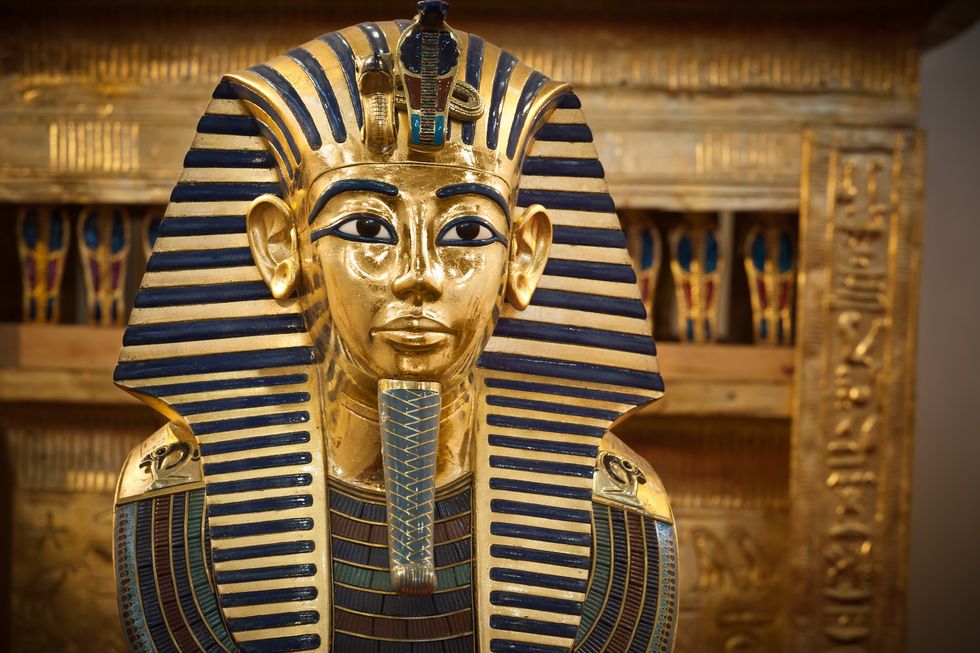Gregory Robinson
Sep 20, 2025
Archaeologists uncover remarkable 'hidden detail' on Tutankhamun's death mask
GB News Videos / VideoElephant
Tutankhamun’s solid gold mask is one of the most well known ancient Egyptian artefacts we know of today, but new evidence suggests it did not even belong to him.
After ascending to the throne as a child, when he was around eight or nine years old, his reign was short and relatively unimportant according to historians. The thing that sets the young former ruler apart from other historical figures is the tomb he was found in.
King Tut, as he is colloquially known, was a young Pharaoh who ruled over Ancient Egypt from 1333 BC until his death in 1323 BCE. His tomb is an extremely important artefact because it was discovered in 1922 almost intact and full of treasures, including cutlery, sceptres, chariots, and the mask.
His mummy was also incredibly well-preserved, providing valuable insights into one of the most profound eras in human history.
The mask we believe to be Tutankhamun’s is 21 inches tall, 15.5 inches wide, and 19 inches deep. It is made from 10kg solid gold inlaid with obsidian and quartz. Clearly a lot of love and attention went into making it, and people have gone to great lengths to pay tribute to the mask, including a maze inspired by its design in a York field.

But a re-examination of King Tut’s burial mask has several key details which suggest it was not originally made for him.
“This mask was not made for an adult male pharaoh,” said Joann Fletcher, Egyptologist and honorary visiting professor in the Department of Archaeology at the University of York. The comments were made in a History Hit documentary, as reported by Express.
“When the fold was compared, [they found] the face is made of completely different gold to the rest.
“Evidence of soldering is clearly visible on the mask,” she added “It now seems as if Tutankhamun’s own face was effectively grafted onto the mask of the previous ruler. They may have had pierced ears, they may have been a woman, it may well have been [Queen] Nefertiti.”
The earring holes are apparently a giveaway about the mask essentially being a hand-me-down.
King Tut reigned until 1323 and he died aged 18 or 19. Scientists believe he had malaria and a broken leg, with the latter possibly caused by a chariot accident.
A somewhat unexpected death could have left officials at the time scrambling to find a suitable burial chamber.
One thing’s for sure, the mysteries surrounding King Tut will continue for many years to come…
This article was originally published on 14 November 2024
Sign up for our free indy100 weekly newsletter
How to join the indy100's free WhatsApp channel
Have your say in our news democracy. Click the upvote icon at the top of the page to help raise this article through the indy100 rankings
Top 100
The Conversation (0)














